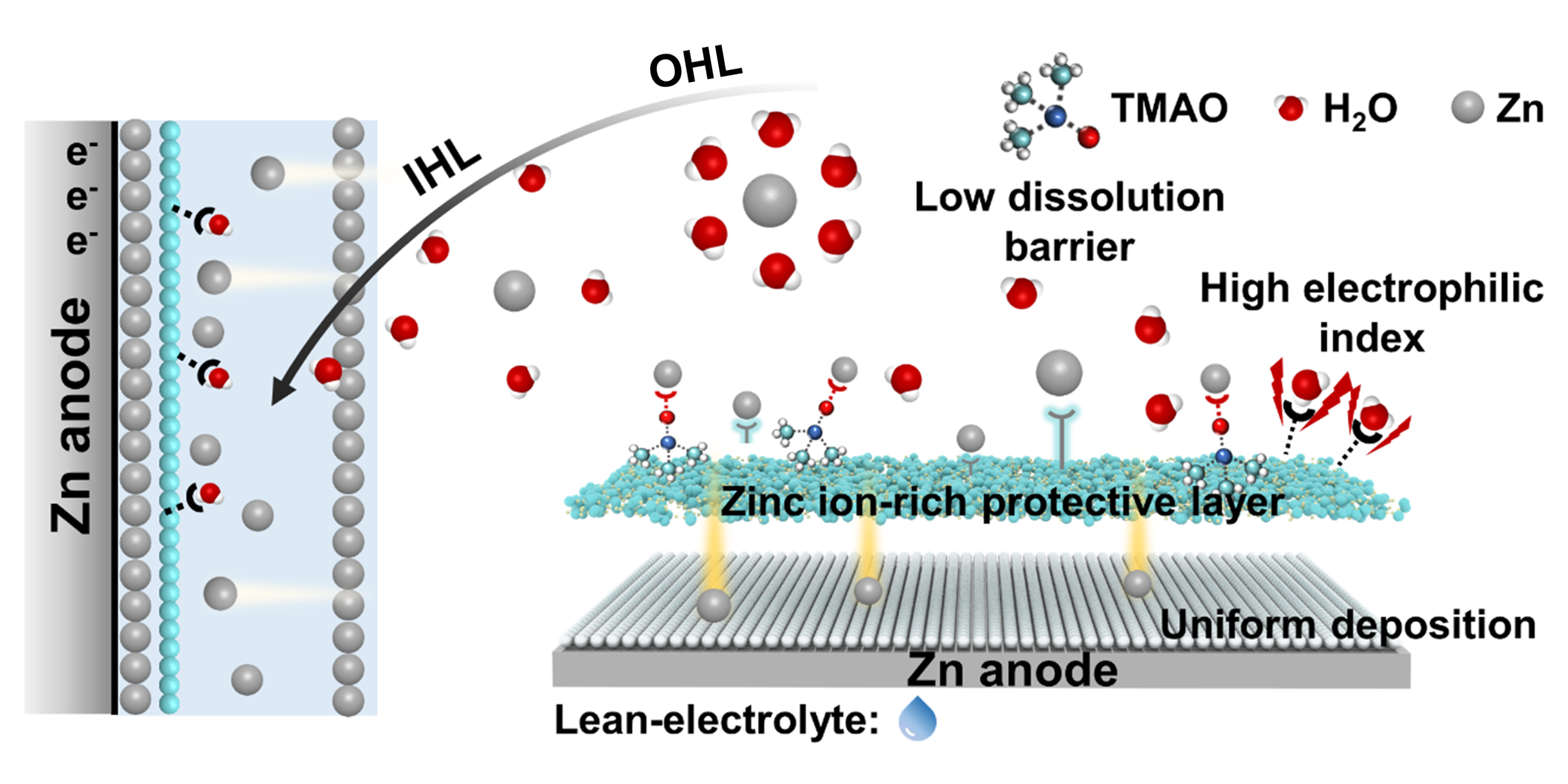Weak Dipole Effect Customized Zinc Ion-Rich Protective Layer for Lean-Electrolyte Zinc Metal Batteries
Citation
Yifan Pan, Doudou Feng, Yanchun Xie, Yucong Jiao*, and Peiyi Wu*. Weak Dipole Effect Customized Zinc Ion-Rich Protective Layer for Lean-Electrolyte Zinc Metal Batteries. Adv. Mater. 2025, 37, 2501004.
Abatract
The industrial development of Zn-ion batteries requires high performance even with lean-electrolyte. Nevertheless, lean-electrolyte can exacerbate concentration polarization at the interface of electrode/electrolyte, leading to significant Zn corrosion and battery failure. Here, a stable Zn ion-rich protective layer (TMAO-Zn) is constructed by a unique zwitterion structure of trimethylamine N-oxide (TMAO). The TMAO is characterized by the direct connection between positive and negative charges (N+-O−) with minimal dipole moment, which renders weak dipole interactions to form the TMAO-Zn layer with Zn2+, thereby reducing concentration polarization and promoting the rapid and uniform deposition of Zn2+. Furthermore, the O of TMAO-Zn exhibits the higher electrophilic index, indicating a stronger propensity for stable hydrogen bond interactions with active free water in the inner Helmholtz layer (IHL), thereby mitigating corrosion under extreme conditions of low electrolyte-to-capacity ratio (E/C ratio). Consequently, the symmetrical Zn battery with TMAO-Zn enables stable cycling for over 250 h with lean-electrolyte of 15 µL mA h−1. Additionally, Zn/I₂ pouch battery with a low E/C ratio of 21.2 µL mA h−1 provides ultra-high stable specific capacity of 96 mA h for over 250 cycles (capacity retention rate of 98.3%). This study offers a new concept to propel the practical application of Zn batteries with lean-electrolyte.


